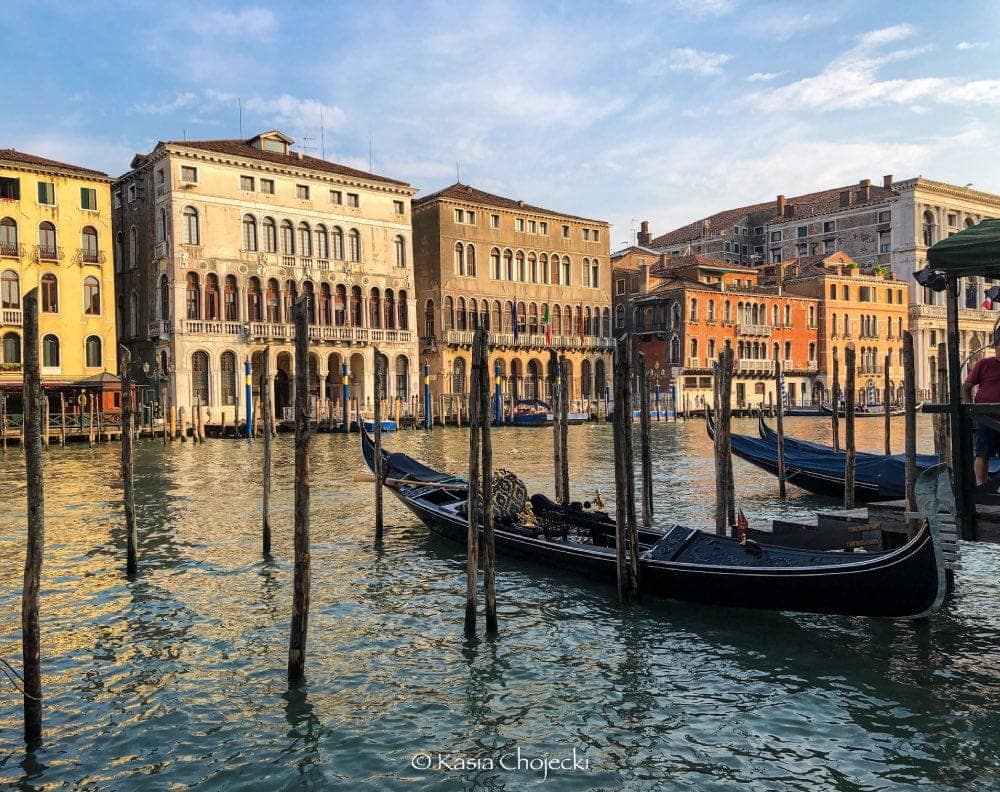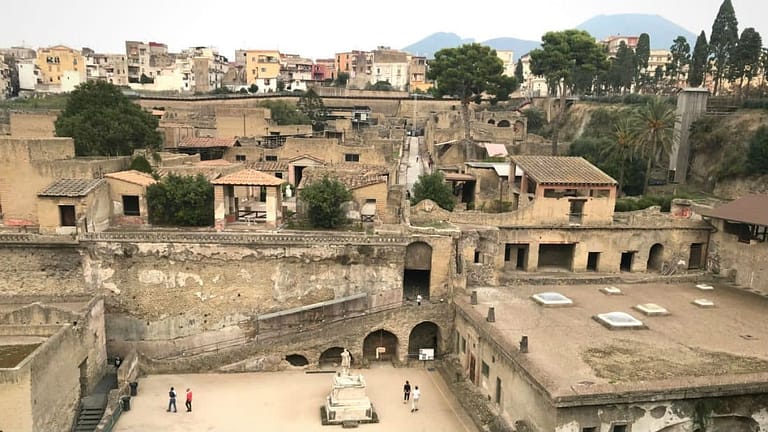Truly, madly Venice: guide to visiting Italy’s water city
I forgot just how beautiful Venice is. My memory of our first visit so many years ago was dulled by time. I remember marvelling at the history, the architecture and the canals, but it wasn’t a vivid picture in my head. However, it all came rushing back the moment we got to Italy’s water city again.
Venice rises out of the water like something straight out of a fairy tale. There is a timeless beauty that has changed little over time. Once a powerful city-state, Venice dominated trade in the Mediterranean for centuries. The money and power of that time are still here for all to admire.
Italy’s water city is a popular tourist destination. It’s been attracting visitors for centuries and it’s easy to see why. While the crowds and heat can be off-putting, you can still explore plenty of areas in solitude.
Affiliate Disclosure – This post contains affiliate links. If you make a purchase through these links, I may earn a commission. This doesn’t affect your purchases or any fees you may pay for the product or service. Read more in my DISCLAIMER.
10 facts you might not know about Italy’s water city
- Venice has 417 bridges, including 72 private ones
- There are 177 canals in Venice, with the Grand Canal being the largest
- There are 170 houses along the Grand Canal, built between 1200 and 1700
- Venice was built approximately 1500 years ago and sits on top of long wooden stilts driven down through layers of sand and mud into the compressed clay below
- Italy’s other maritime power Genoa often fought Venice for control of the trading routes
- Venice is made up of 118 islands
- Venice is home to more than 450 palaces
- The city sinks about 1 to 2 millimetres each year
- There are about 350 gondolas in Venice, each measuring 11 meters long and weighing around 600 kg.
- Over the last 50 years, the population of Venice has decreased from 120,000 to 60,000 and is continuing to decline.


The history of Venice history
Venice started as a fishing village. After the fall of the Roman Empire, many people fled to the lagoon to escape the invading northern barbarian tribes that were pillaging the mainland. What seemed like an unlikely quest became a feat of engineering and an architectural marvel we see today.
Over time, Venice evolved into a military, trading and financial powerhouse. The Venetians were skilled warship makers and astute traders. This made them wealthy and prosperous. It was an international financial and commercial centre for centuries. Goods like silks, grain, spices and art were shipped all over the Mediterranean. It was also a thoroughfare for the Crusades.


Venice’s decline started sometime during the 15th century. Several unsuccessful military campaigns, the discovery of new trade routes by the Portuguese explorer Vasco da Gama, and the devastation of numerous plagues all contributed to its fall. Venice lost its independence to Napoleon in 1797. It then changed hands a few times between Napoleon and the Austrian Empire until it became part of the Kingdom of Italy in 1866.
Architectural marvels of Venice
Over a million tree stumps pounded into the mud and clay holding up Italy’s water city. It’s hard to imagine how any building can remain here without sinking. Yet, the whole city managed to stay afloat for centuries. Grand palaces, churches, bridges and gardens add to the artistic flair of Venice. Rising seamlessly out of the water, they are a testament to human determination, power and imagination.
As a significant trading power, Venetians had contact with other great cultures of the day. They also had money to spend. Because of that, many of Venice’s architectural elements are a blend of Byzantine, Islamic and Gothic styles. Even the bridges are artfully designed to fit the aesthetic.
Over the centuries, Venetians built magnificent mansions, churches and monuments, adopting new styles to their own needs. As a result, the architecture in Venice is unlike any other place. One of my favourite things to do here is wandering around the little streets and discover beautiful gems that seem to appear on every corner. As many of the buildings were built top-heavy, it’s important to look up. You never know what you will discover.
Basilica di San Marco
One of the best examples of blended styles is Basilica di San Marco, combining Islamic and Byzantine elements. The church has a Greek cross layout with five domes, supported by semi-circular arches. Inside you’ll find gold leaf mosaics from the 11th century. Outside, you can spot Islamic influence in the ribbed lanterns, arches, columns and statues. Many of these were brought home by Venetians as spoils of war and reflect different styles from different times.

Palazzo Ducale (Doge’s Palace)
It’s hard to resist a place like the Palazzo Ducale. As a former official residence of the Doge, the Venetian ruler, the Palazzo is a stunner. The ground-level arches of the portico support the even more elaborate columns of the loggia above.
They beautifully accent the building’s pink Verona marble façade. Here you’ll find Islamic influences as well as Venetian Gothic design. Ornate carvings and more statues adorn the windows and doors, making it difficult to pick just one thing to love.

The inside of this complex is just as impressive. White stucco ceilings adorned with gold leaf and statues of mythical gods add to the charm and elegance. Here you’ll find works by some of Venice’s finest artists and get a glimpse of what wealth was like in those days. It’s one of those jaw-dropping places that are a sensory overload.
Galleria Giorgio Franchetti alla Ca’ d’Oro
While the rest of Europe was frantically building in the Gothic style, Venice invented its own version. Adapting its aesthetics from the styles of both Western and Middle Eastern architecture. Unlike Germany and France’s pointed arches’ framing windows, the Venetian Gothic style added three-loved Moorish flourishes to the arches. You can see this in many grand houses, including the famous Ca’ d’Oro palazzo-turned museum on the Grand Canal.
The canals in Venice
The canals are to Venice what streets are to other cities. As a place built on water, the canals play an essential part in Venetian life. Not only are they a practical means of moving people and goods across the city, but they are also a great way to see the city.
The waterways are like veins, pumping life into the city. For centuries Venetians have been skillfully navigating through these waters, just as they do today. The canals in Venice offer an intimate look at the many palazzos, homes and bridges lining them. It’s a fantastic way to discover Venice from a totally different angle and step back in time.


Venice is beautiful from any angle and in every light. Drenched in sunlight, during rain, fog and cloudy skies. At dusk, sunset and in pure sunshine. There are many sides to Venice that are worth experiencing.
Navigating the canals in Venice is something every visitor is likely to experience. Between the gondolas, the water taxis or private boats, visitors can see Venice the way locals have been doing for centuries.
Venice islands
Many people think of Venice as an archipelago of sorts. But the city is made up of small islands connected by bridges and canals. Other islands in the Venetian Lagoon also are part of Venice.
If you enjoy reading about Italy’s water city, you might enjoy all the reasons to visit Italy!
Some are more well-known than others, and all offer their own flavour of Venice. You can spend days discovering all the streets and canals in Venice, but check out the nearby islands if you have some time.
Timetables and routes.
- Burano – popular destination, famous for its colourful painted houses
- Lazzaretto Nuovo – tours on weekends by appointment. This was also one of the islands used for quarantine during outbreaks.
- Le Vignole – a wilder and more agricultural island with few visitors
- Lido (di Venezia) – known as the home of the Venice International Film Festival and a long sandy beachfront
- Mazzorbo – a sleepy rural island connected to Burano by a bridge
- Murano – known as a glass-making centre and popular tourist destination
- San Michele – two islands joined together, dedicated to the dead, this is Venice’s cemetery.
- Sant’Erasmo – agricultural island and the largest in the lagoon, filled with farms and open space
- San Lazzaro degli Armeni – a tiny island in the lagoon with an Armenian monastery
- Torcello – the original island of what became Venice, home to the Cathedral of Santa Maria Assunta, founded in 639
Venice attractions
Venice can be a wonderful place for discovery. Most people tend to stick around the major tourist sites like Piazza San Marco, the Rialto Bridge and the Grand Canal. They return complaining about the crowds, high prices and stinky water. Sure, Venice can be all that depending on when you visit, but it also depends on where you go.
The moment you step away from the main tourist spots, the more likely you are to discover the real Venice. Getting lost in the narrow streets, walking over small bridges, and founding old piazzas and hidden courtyards are what exploring Venice is all about. I was amazed at how many spots we found devoid of tourists. We enjoyed the sights of empty canals lined with parked boats and gondolas. It was like finding a hidden treasure.
Museums and galleries
Many of Venice’s former palazzos have been turned into galleries, museums and hotels. They offer visitors the opportunity to see inside these former residences while also providing a cultural experience.

Here you’ll find many temporary and permanent exhibitions ranging from the old masters to modern works. From paintings, objects d’art and personal collections, visitors can explore to their hearts’ content.
- Ca’Pesaro
- Ca’Rezzonico
- Doge’s Palace
- Galleria dell’Accademia
- Leonardo Da Vinci museum
- Palazzo Fortuny
- Peggy Guggenheim Collection
- Museo del Merletto (Lace Museum)
- Museo Civico Correr
- Scuola Grande di San Rocco
Explore more of Venice’s museums with the museum pass.
Churches
Like any other European city, Venice has several grand churches that are spectacular works of architectural styles filled with grandmasters’ works. Even if you’re not a religious person, these churches make interesting places to explore.


They also offer a great escape from the elements like heat and rain. Here is a list of the 10 most beautiful churches according to erasmusu.com
- Basilica of Santa Maria Gloriosa dei Frari
- Chiesa di San Rocco
- Basilica dei Santi Giovanni e Paolo
- Chiesa di San Zaccaria
- Basilica di San Marco
- Chiesa dei Carmini
- Basilica di Santa Maria della Salute
- I Gesuiti
- Chiesa di San Sebastiano
- Chiesa di San Barnaba
Culinary paradise
Besides its moniker as Italy’s water city, Venice is a foodie paradise. From creamed cod (Baccala mantecato), squid ink pasta (spaghetti al nero di sepia) and all kinds of seafood, you’ll find a great variety of local specialties to explore.
As Venice has become a city that caters to tourists, pretty much all restaurants will be touristy. That doesn’t mean that you won’t find good restaurants for reasonable prices. Expect to pay more in popular tourist spots and places by canals, especially the Grand Canal. It’s worth wandering into the little streets.
We had some amazing food in Venice. Just thinking about the flavours makes my mouth water. I tried the squid ink pasta, which I wasn’t originally too keen on trying. It ended up being one of my favourite dishes.
The tasty squid tangled in the dark noodles with hints of pesto and tomatoes was outstanding. As was the tuna appetizer done three different ways. Even the bread was tasty. We had other kinds of pasta, gelato and bread, all hitting culinary perfection.


You’ll find an Italian version of tapas called Cicchetti and several Italian-style fast food joints that serve freshly made pasta with toppings in small takeaway containers. For a few Euros, you can grab great quality food and enjoy it as you go. Just make sure not to litter and dispose of your trash appropriately.
Shops and markets
Venice is filled with fascinating shops. From local specialties of masquerade masks, glass and lace to everyday items like food, books and clothes. Shopping can be as extravagant or as low-key as you want. From tourist trinkets to designer brands and everything in between.

If shops are not your thing, Venice’s Rialto Market is a good place to mingle with the locals. The commercial centre of the city since 1097, the market is open every day except for Sunday.
Along the Grand Canal and just around the Rialto Market is the Pescheria – Venice’s fish market. If you get here after the market closes for the day, you might notice the lingering smell of fish as you admire the elegant columns and arches that house the market.
Venetians that inspired me
Before I even got to Venice, the city and the people who lived there had fascinated me through movies and books. There are many famous Venetians, but there are three that I find particularly endearing.
Veronica Franco
Veronica Franco lived in Venice in the 16th century. She was a courtesan, but not just your average lady of the night. At the time, Venice had two “levels” of prostitution, the cortigiana onesta (the intellectual courtesan) and the cortigiana di lume (your lower level, street ladies). In a world where women had little opportunity and prospects, Veronica followed in her mother’s footsteps so that she could make her own way.
She was educated, spoke multiple languages, was well-read, played an instrument and even wrote poetry herself. Veronica, a woman of wit, determination and power, enjoyed the company of wealthy, powerful and famous men, including France’s King Henry III.
She experienced wealth and power, but she was also no stranger to hardship. Accused of witchcraft (quite a common practice in those days by men threatened by women), she fought against the Inquisition and won. She lost her fortune and status but was a strong advocate for women, children and the poor. I found her fascinating after watching the movie Dangerous Beauty. The movie also does a great job of capturing 16th-century Venice.
Veronica Franco doesn’t come up when you google “famous people from Venice,” which I think is a shame. That’s why I’ve included her in this blog. People should know about her and the life she led.
Giacomo Casanova
Giacomo Casanova lived in Venice about two centuries after Veronica. Like her, he was charming, educated and, although he wasn’t paid for it, led a life of sex and intrigue. Casanova, known for his sexual escapades and appetites, charmed European court members and scandalized his contemporaries with his racy memoirs.
Casanova’s memoirs make my list of books that inspire travel!
His boldness and determination to push boundaries made him a fascinating character. You don’t have to like him to appreciate the insights his writing provided into European society’s life during the 18th century. He is definitely one of the most famous Venetians.
There have been many movies and books about Casanova, including his own writings. You can’t think of Venice and not think of Casanova. You can imagine him sneaking out of some lady’s window from an illicit liaison as you’re walking around. Or having naughty gondola rides with his lady friends.
Marco Polo
Merchant, explorer, writer. Marco Polo is a familiar name, although few know he was born in Venice. He lived a life of adventure and exploration in a very different time. His Venice, over a century before Veronica’s, was on the rise to power and prosperity. It must have been a fascinating place.
Marco Polo’s travels place him on my list of people who changed the world of travel!
Marco Polo spent 24 years in China before returning home. He came back when Venice and Genoa were at war and ended up in prison. There he dictated his travels to his cellmate, leaving behind a work that inspired many others. It also provided Europeans with detailed insight into the inner workings of the many Asian cultures he visited. Although some have cast doubt on his account of China and other places, many of the places have been identified and proven.
Marco Polo spent the rest of his years living in Venice. Just the idea of walking on the same streets as a famous explorer did centuries before is a very cool reason to stroll around Venice.
Tips for where to stay
Staying in Venice is an amazing experience. There are so many remarkable places to enjoy the old world’s splendour if you choose to stay in the heart of the city. But that can come with a high price tag and many challenges, especially during high season. Plus, dragging your suitcases across the bridges and canals can be a harrowing experience. That’s the fun of visiting Italy’s water city.
The first time we stayed in the heart of Venice, we loved every minute of it. As we had a car with us on future trips, we opted to stay outside the city since you can’t bring vehicles into Venice. The small cities of Marghera and Mogliano Veneto offer great alternatives at lower prices. Both also have convenient and quick access to Venice. Some buses and trains take you to the city for a few Euros each way.
So, if you’re looking for where to stay, remember that there are plenty of options for seeing Venice.
My thoughts about Italy’s water city
I fell in love with Venice a long time ago. Returning after so many years proved that the city still has power over me. It really is a beautiful and fascinating city and I hope this inspires you to visit if you haven’t already.
Yes, Italy’s water city is very touristy. It’s also unique and stunning, and it may not be here forever. The city is sinking while battling elements, congestion and time. I’m glad I got to see it several times. It’s definitely one place where I can imagine myself spending a lot of time.









